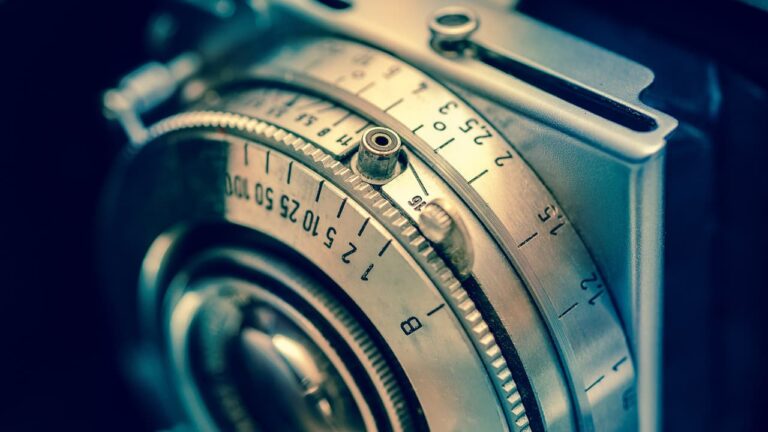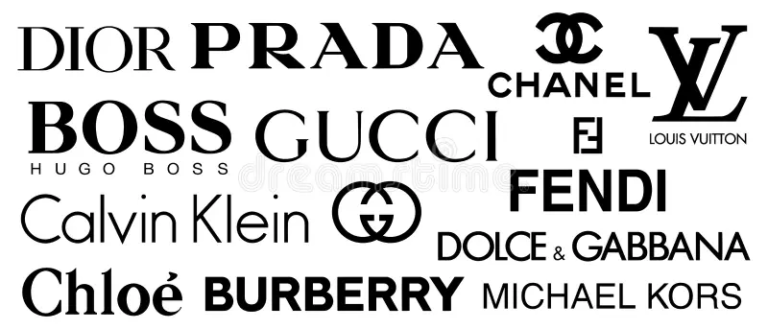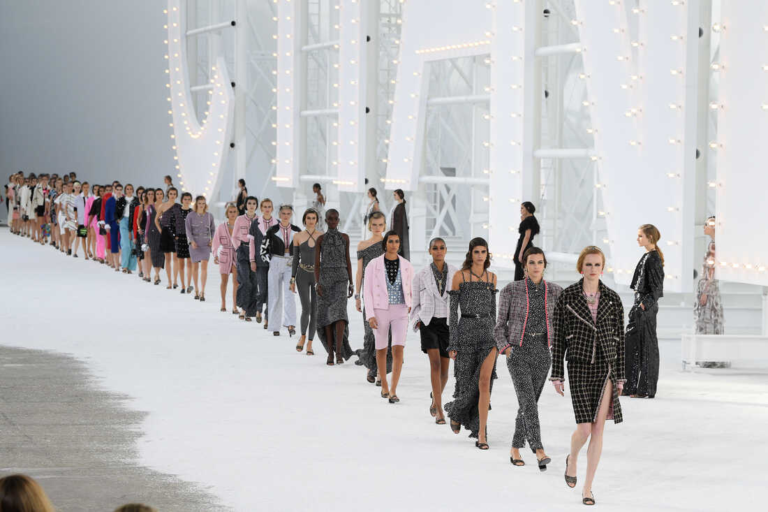Introduction
In the competitive fashion industry, where presentation and precision are valued highly, a well-written cover letter may be the deciding factor in landing your dream job. To introduce yourself, share your enthusiasm for the fashion industry, and explain why you want to work for a specific label or business, you can use a cover letter. A cover letter, in contrast to a resume, is a tailored document that provides insight into the applicant’s motivations, character, and interest in the fashion industry.
Key Elements of a Fashion Cover Letter
The key to landing your dream job in the fashion industry is a well-written cover letter. The resume is your first impression and an opportunity to sell your skills and enthusiasm for the position. The following are must-haves for any fashion cover letter if you want to stand out from the crowd:
Contact Details
Your contact information needs to be displayed in a clean and expert fashion:
- Full Name: Ensure that you prominently display your complete legal name, rather than a casual nickname or an alias.
- Address: Please include your comprehensive physical address, encompassing your street address, city, state, and ZIP code. This information helps the potential employer assess your proximity to their location.
- Phone Number: Furnish a primary contact number, and make certain that your voicemail message conveys professionalism.
- Email: Utilize a professional email address, ideally constructed from your name. Avoid whimsical or inappropriate phrases in your email address.
Make sure your email and phone number are up-to-date and often checked so you don’t miss any messages from prospective employers.
Recipient’s Information
Beneath your contact information, incorporate the recipient’s details:
- Recipient’s Name: Whenever feasible, address your cover letter to a particular individual responsible for the hiring process. This not only showcases your research initiative but also adds a personalized touch to your application.
- Recipient’s Position: Acknowledge the recipient’s role within the company by mentioning their job title.
- Company Name: Explicitly specify the name of the fashion company or organization to which you are submitting your application.
- Company Address: If you are applying for a position at a physical fashion store or office, provide the company’s physical address. This is especially important for brick-and-mortar locations.
The Title
Indicate the job position you are seeking concisely, using the exact terminology from the job advertisement:
- “Fashion Editorial Assistant at [Company Name]”
- “Fashion Design Internship with [Company Name]”
Precision in matching the job title demonstrates your meticulousness and alignment with the specified job requisites.
Personalized Address
Customize your salutation to make a strong impression:
- “Dear Mr. Smith,”
- “Dear Fashion Forward Team,”
Addressing the recipient by name or the company name demonstrates your genuine interest in the position.
Crafting the Perfect Fashion Cover Letter
Introduction
The introduction serves as your initial opportunity to effectively engage the reader. Here are some tips to consider:
- Begin with a captivating opening sentence that immediately seizes the reader’s attention. One approach is to highlight a recent industry achievement of the company that piques interest.
- Introduce yourself briefly, including your current position or academic status if it’s pertinent to the position you’re applying for.
- Explain how you became aware of this job opportunity, specifying the source, whether it was through the company’s website, a job board, or any other platform. If someone referred you, kindly mention their name and your relationship with them.
- Show your authentic enthusiasm for the position and the company by conducting thorough research on its history, mission, and recent projects. Expressing genuine excitement demonstrates your commitment and alignment with the company’s goals and values.
Reason for Applying
When delving into this particular segment, let’s unravel the intricate web of your fascination with this specific role and the symphony it conducts with your professional aspirations:
- Embark on a journey through the labyrinth of your passion for fashion, traversing the corridors of your enduring ardor for this dynamic industry.
- Illuminate those facets of the job description that resonate with the very core of your being; the responsibilities and projects that strike a harmonious chord within.
- Paint a vivid picture of the symbiotic relationship between the company’s culture, values, or products and your own deeply ingrained beliefs and interests.
- Enrich the narrative with personal anecdotes, crafting a narrative tapestry that weaves together the unique threads of experiences and revelations that have propelled you toward a career in fashion.
By seamlessly intertwining your aspirations and motivations with the essence of this position and the ethos of the company, you will unveil a profound alignment and unwavering commitment.
Why You?
This section is where you present a compelling case for why you are the ideal candidate:
- Expertise: I boast advanced proficiency in fashion design software like Adobe Illustrator and Photoshop. My profound grasp of the latest fashion trends and market dynamics empowers me to craft designs that truly resonate with consumers. Furthermore, my forte lies in effective communication and seamless collaboration, skills that I’ve honed through my previous fashion internships.
- Experiential Prowess: During my tenure at [Previous Company], I spearheaded and flawlessly executed a fashion show that not only grabbed the attention of the media but also boosted brand visibility by a remarkable 30%. This event served as a testament to my exceptional organizational acumen and leadership prowess, underscoring my ability to be a driving force behind brand expansion.
- Unique Attributes: My creativity shines through in my distinctive clothing collections that seamlessly blend traditional and contemporary elements, setting them apart in the market. My reputation for an unwavering attention to detail, adaptability in a constantly evolving industry, and unwavering commitment to sustainable fashion practices make me an exemplary candidate, poised to make a significant impact on any fashion team or project.
Attachments and Supplementary Information
In certain instances, employers not only appreciate but also anticipate the submission of supplementary materials alongside your cover letter and resume. It is imperative that you draw attention to these attachments and additional information to underscore your diligence and facilitate the reader’s exploration of these resources. Consider the subsequent structure:
- Attachments: Enclosed within this application, you will discover my extensive portfolio, meticulously chronicling my design endeavors over recent years. This portfolio encompasses a panorama of my collaborative ventures and individual masterpieces. It serves as a gateway to a deeper understanding of my design ethos, my gamut of skills, and my adaptability.
- References: At your behest, I stand ready to furnish references from my prior employers, esteemed colleagues, and erudite professors. These individuals can vouch for my unwavering work ethic, consummate professionalism, and invaluable contributions to collaborative endeavors.
- Relevant Links: Furthermore, I extend an invitation to peruse my personal fashion blog, accessible at [Blog URL], where I expound upon prevailing fashion trends, delineate my sources of design inspiration, and proffer reflections on the dynamic fashion landscape. You may also peruse my oeuvre on Instagram, under the handle [@YourInstagramHandle], boasting a following of over 10,000 fervent fashion aficionados.
- Certificates and Awards: To corroborate my credentials, I have appended a document cataloging my certifications and accolades. This compilation includes the coveted [Specific Award Name], a prestigious accolade bestowed upon me in 2022 for my pioneering efforts in sustainable design.
Additional Tips for a Superb Cover Letter
When it comes to crafting a cover letter that stands out to potential employers, there are several key considerations to keep in mind. Let’s delve into these factors in detail, providing you with the knowledge and tools to create a compelling and effective cover letter.
Conciseness and Length
Constructing a compelling cover letter hinges on its conciseness and focus, ideally confined to a single page. To navigate this realm effectively, here are some directives:
- Paragraph Structure: Employ a well-organized paragraph structure to communicate your points with precision. Typically, a cover letter comprises three to four paragraphs: an opening, a body section, and a conclusion.
- Brevity: Embrace brevity in your prose. Steer clear of superfluous details or protracted explanations. Each paragraph should serve a distinct purpose, enriching your application with value.
- Relevance: Maintain unwavering relevance to the job in question. Spotlight skills and experiences that bear direct pertinence to the position you are pursuing.
Formatting and Typography
The aesthetics of your cover letter’s visual presentation hold paramount significance. To this end, employ a professional and easily readable font like Arial or Times New Roman, while diligently observing the subsequent formatting stipulations:
- Font Size: Optimal readability is achieved with a font size ranging between 10 to 12 points.
- Alignment: Preserve a uniform left alignment throughout the entirety of your letter.
- Margins: Establish one-inch margins on all sides, cultivating a tidy and methodical visual layout.
- Spacing: To enhance readability, adopt single or 1.15 line spacing, rendering your content effortlessly digestible.
By adhering to these formatting and typographical conventions, your cover letter will exude professionalism and convey its content with utmost clarity.
Professional Tone
Consistently uphold a professional and formal tone in the composition of your cover letter. Eschew the use of casual language, slang, or overly familiar expressions. Always bear in mind that your cover letter serves as a mirror reflecting your professionalism and aptitude for the prospective role.
Proofreading and Editing
Meticulous proofreading stands as an indispensable step to guarantee the immaculateness and refinement of your cover letter. Here’s how to approach this critical task:
- Grammar and Spelling: Exercise utmost diligence in scouring for grammar and spelling imperfections. While spell-checking tools are useful, they should not be solely relied upon. Manual scrutiny remains imperative.
- Clarity and Coherence: Assure that your cover letter unfolds in a logical and coherent manner. It should present a narrative that the reader can effortlessly follow.
- Consistency: Be vigilant for uniformity in formatting, style, and tone. Inconsistencies in these elements can diminish the overall professionalism of your letter.
- Seek Feedback: Contemplate enlisting the assistance of a trusted friend, family member, or mentor to assess your cover letter. Fresh perspectives can unearth errors and furnish valuable feedback pertaining to content and tone.
In adherence to these practices, your cover letter will emerge as a polished and error-free testament to your professionalism and competence.
Tips for a Winning Fashion Cover Letter

Tips for a Winning Fashion Cover Letter
| Tip | Description |
|---|---|
| Deep Dive into Brand Research | Before you start writing, research the brand extensively. Understand its history, values, and mission. This knowledge will allow you to tailor your cover letter to the company’s culture and demonstrate genuine interest. |
| Clarity is Key | Ensure your cover letter has a clear structure. Divide it into concise, relevant paragraphs to make it easy for the reader to follow your narrative. Avoid long, convoluted sentences and paragraphs. |
| No Room for Errors | Proofread your cover letter meticulously. Spelling and grammar mistakes can be a major turn-off for recruiters. Use tools like Grammarly or ask a friend to review it for you. |
| Brevity Wins | Keep your cover letter succinct. Aim for a half to a full page in length. Recruiters appreciate content that is to the point and doesn’t overwhelm them with unnecessary details. |
| Originality is Crucial | Your cover letter should complement your resume, not duplicate it. Avoid regurgitating your resume’s content. Instead, offer fresh insights, anecdotes, or perspectives that showcase your unique qualifications and experiences. |
| Be Authentic | Let your genuine personality shine through. Fashion is as much about individuality as it is about style. Be authentic in your writing, and convey your passion for fashion and the specific role you’re applying for. |
Deep Dive into Brand Research
Before you start drafting your fashion cover letter, invest time in researching the brand you’re applying to. This step is essential for tailoring your letter to the company’s culture and demonstrating your genuine interest.
- Brand History: Delve into the brand’s history to understand its evolution, significant milestones, and iconic moments. Note key events, such as when it was founded and any major changes in direction.
- Values and Mission: Explore the brand’s core values and mission statement. These often reveal what the company stands for and its long-term goals. Align your language and tone with these values.
- Product and Style: Familiarize yourself with the brand’s product range and design aesthetic. Recognize any signature styles, fabrics, or design elements that are unique to the brand.
- Target Audience: Identify the brand’s target audience or customer base. Understanding who they cater to can help you tailor your cover letter accordingly.
- Recent News and Achievements: Stay updated with recent news and achievements related to the brand. This demonstrates your up-to-date knowledge and enthusiasm for the company.
Clarity is Key
When writing your fashion cover letter, maintain a clear and organized structure. Follow these guidelines for clarity:
- Introduction: Begin with a strong and engaging opening paragraph. State the position you’re applying for and express your excitement about the opportunity.
- Body Paragraphs: Divide the main content of your letter into 2-3 paragraphs. Each paragraph should focus on a specific aspect, such as your qualifications, experiences, or passion for the brand.
- Conclusion: Conclude your letter with a powerful closing statement. Reiterate your interest in the role and company, and express your eagerness to discuss your qualifications further.
- Salutation: Use a professional and personalized salutation, addressing the hiring manager by name if possible. If you don’t have a specific name, use a generic but polite greeting.
- Signature: Sign off with a professional closing, such as “Sincerely,” and include your full name below.
No Room for Errors
To ensure your fashion cover letter leaves a positive impression, meticulously proofread it to eliminate spelling and grammar mistakes. Use the following strategies to catch errors:
- Spell Checkers: Run your cover letter through spelling and grammar checkers like Grammarly or Microsoft Word’s built-in tools.
- Read Aloud: Read your cover letter aloud to identify awkward or unclear sentences. This can help you spot grammatical errors and improve overall readability.
- Peer Review: Ask a trusted friend or family member to review your cover letter. Fresh eyes are more likely to catch mistakes you might have missed.
- Time Gap: After writing, set your cover letter aside for a few hours or even a day before reviewing it again. This allows you to approach it with a fresh perspective.
Brevity Wins
Fashion cover letters should be concise and focused. Recruiters often receive numerous applications, so they appreciate brevity and clarity. Aim to keep your cover letter between half to a full page.
- Prioritize Information: Highlight the most relevant qualifications and experiences that directly relate to the job you’re applying for. Avoid unnecessary details or lengthy narratives.
- Use Bullet Points: Use bullet points to list key achievements or skills. This format makes it easier for recruiters to scan and absorb important information quickly.
- Stay On Topic: Stick to the topic at hand—your qualifications and passion for the role and company. Avoid going off on tangents or including unrelated information.
Originality is Crucial
Your fashion cover letter should complement your resume, not regurgitate it. Offer fresh insights and perspectives that showcase your unique qualifications and experiences:
- Tell Stories: Share specific anecdotes or experiences that demonstrate your skills and accomplishments. Provide context and explain how these experiences make you a valuable candidate.
- Show Enthusiasm: Express your genuine passion for the fashion industry and the specific role you’re applying for. Explain why you’re excited about the opportunity and how it aligns with your career goals.
- Customize Each Letter: Avoid using a generic template for all your applications. Tailor each cover letter to the specific job and company to demonstrate your sincere interest.
Be Authentic
In the fashion industry, authenticity is valued just as much as style. Let your genuine personality shine through in your cover letter:
- Voice Your Passion: Use passionate and enthusiastic language to convey your love for fashion. Share what inspires you and drives your interest in the industry.
- Highlight Your Individuality: Emphasize what makes you unique as a candidate. Whether it’s a distinctive skill set, a personal story, or a creative approach, showcase what sets you apart.
- Professionalism: While being authentic, maintain professionalism in your tone and language. Avoid slang or overly informal language, as it may come across as unprofessional.
Highlight Relevant Achievements
Your fashion cover letter is a platform to spotlight key achievements that make you a standout candidate for the role. Focus on experiences that align closely with the job’s requirements and the brand’s ethos.
- Quantify Accomplishments: Wherever possible, use numbers to quantify your achievements. For instance, “Increased sales by 20% in the first quarter” or “Led a design team that launched a collection featured in Vogue.”
- Showcase Your Versatility: Fashion is a dynamic industry. If you’ve successfully adapted to changing trends, managed diverse teams, or worn multiple hats in previous roles, highlight these facets. This showcases your flexibility and readiness to tackle varied challenges.
- Emphasize Soft Skills: While technical skills are essential, soft skills like communication, teamwork, and problem-solving play a pivotal role in the fashion world. If you’ve collaborated with cross-functional teams or managed conflicts, share these experiences to highlight your interpersonal skills.
- Connect Achievements to Brand Values: Align your accomplishments with the brand’s values. If the brand is known for sustainable practices and you’ve spearheaded an eco-friendly project, be sure to mention it.
Conclusion
Armed with these insights, you are now equipped to craft a captivating fashion cover letter that can resonate with the recruiter and help you make a lasting impression. For enhanced comprehension, consider referring to informative videos or tutorials on writing impactful cover letters in the fashion domain.
FAQs
While some positions might not demand a cover letter, it’s always beneficial to include one as it provides a deeper insight into your personality and aspirations.
Ideally, it should range between half to a full page.
No, always tailor your cover letter to the specific job role and company you are applying to. Personalization can make a significant difference.







